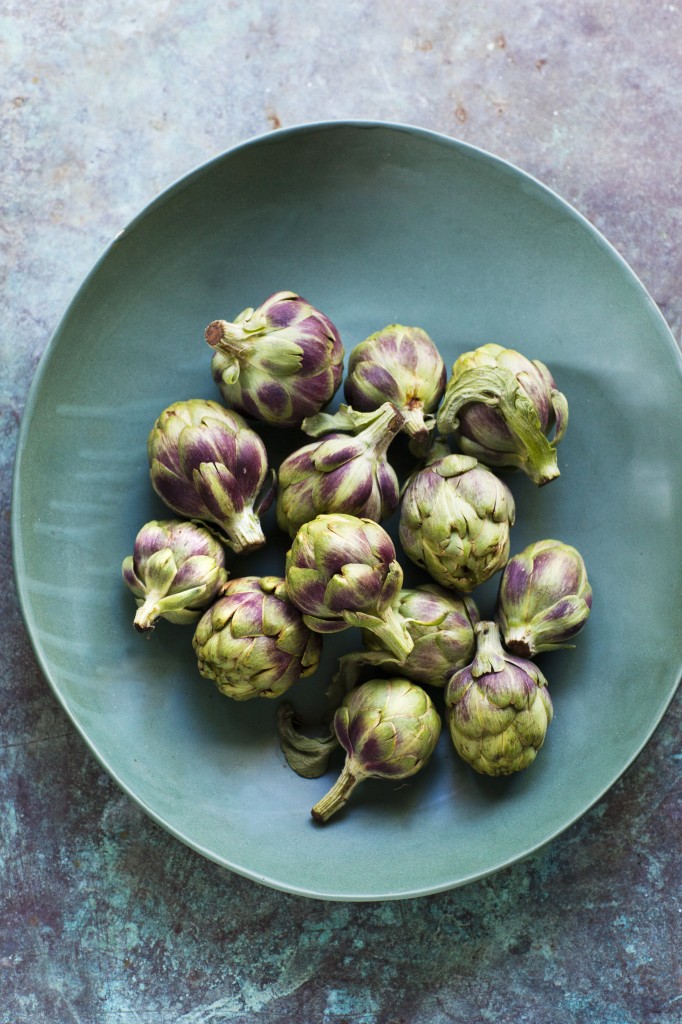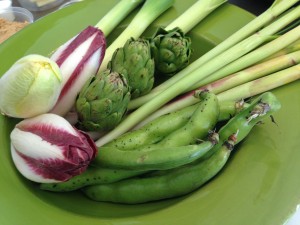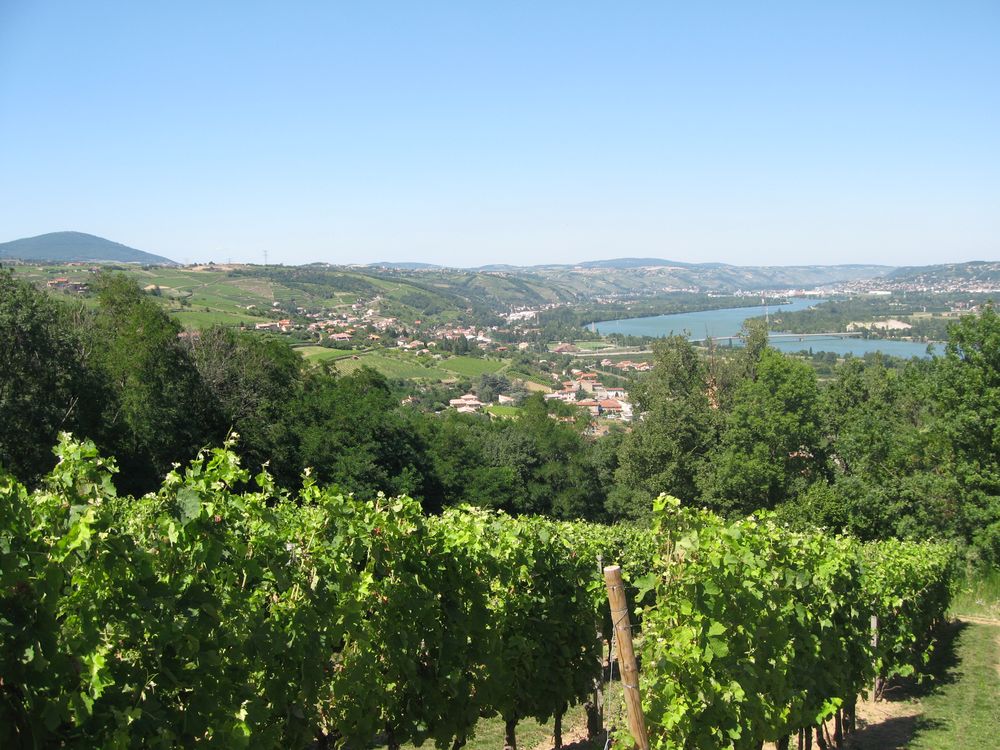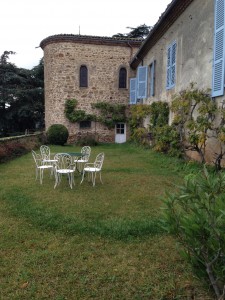Spring is Coming – Recipes, Travel, and Updates
Spring is Coming –Recipes, Travel, and Updates
Welcome! Here you’ll find some recipes, travel notes from France, and some updates about me and La Vie Rustic. The lovely photo above is by Sara Remington.
Spring is coming everywhere, but sooner in California than elsewhere. The hillsides are green, mustard is flowering, and so are the citrus and fruit trees. Spring’s artichokes, fava beans, green garlic and peas are filling the gardens and farmers’ markets and it’s a whole new time to cook.
The first dish of the season for me is Artichoke and Fava Barrigoule, the quintessential dish of the Provencal spring. I like to use the small artichokes that develop along the side branches of the plants for the barrigoule or stew, using the larger ones to stuff or to grill.
Artichoke and Fava Barrigoule
.
1 lemon, halved
8-12 small artichokes
2 pounds of favas, removed from pods
2 tablespoons extra-virgin olive oil
2 tablespoons minced green garlic, about 3 stalks, or 2 cloves garlic, minced
1/4 cup dry white wine
1/4 cup chicken broth
¼ to ½ teaspoon sea salt
2-3 branches fresh thyme
To prepare the artichokes, first fill a bowl with cold water and add the juice of one lemon
Working with 1 artichoke at a time, trim the stem even with the base. Snap off the small tough leaves around base and trim the stub ends flush. Cut off the upper third of the artichoke, then cut off the top one-third of each artichoke. Cut the artichoke in half lengthwise or in quarters if large. If there are any purple tipped inner leaves, remove them. Rub the cut surfaces with the lemon half to prevent browning and put in the bowl of lemon-water and set aside.
To remove the tough outer skin of the fava beans, bring a pot of water to a boil. Blanch for 20 seconds and drain. When they are cool enough to handle, slip off the skins.
Heat the olive oil in a frying pan or sauté pan with a lid. When it is hot, add the garlic and sauté. Add the artichokes and favas, and sauté briefly. Then add the white wine, scraping up any bits and add the broth. Add the salt, thyme and the pepper. Reduce the heat to low, cover and simmer until the artichokes are tender, about 15 minutes.
Remove and let stand until ready to serve. Serve hot or at room temperature.
Serves 6 to 8
Fire-Roasted Artichokes with Yogurt and Green Herb Dip
Marinating the artichokes after cooking and before grilling gives them extra flavor than enhances the grilling – and a little bit charred is OK.
For the sauce
2 cups plain non-fat yogurt
¼ cup minced fresh parsley
1 tablespoon minced fresh tarragon
1 tablespoon minced fresh chives
¼ teaspoon kosher or sea salt
¼ teaspoon freshly ground black pepper
1 teaspoon freshly squeezed lemon juice
For the artichokes
4 medium to large artichokes
1/2 cup minced fresh flat-leaf parsley (about 1 bunch)
2 cloves garlic, minced
1/2 teaspoon sea or kosher salt
1/2 teaspoon freshly ground black pepper
1 teaspoon fresh lemon juice
2 to 3 tablespoons extra-virgin olive oil
In a bowl, combine together the yogurt, parsley, tarragon, chives, salt, pepper and lemon juice. Taste and adjust seasonings as desired.
Cut off the stem of each artichoke flush with the base, then cut off the top one-third (the prickly leaf ends) of each artichoke. Pour water into a steamer pan to a depth of about 3 inches, put the rack in place, and bring the water to a boil over high heat. Place the artichokes, stem end up, on the rack, reduce the heat to medium, cover, and steam until the base of an artichoke offers little resistance when pierced with the tines of a fork, 20 to 30 minutes. The timing will depend on the size and maturity of the artichokes.
Remove the artichokes from the steamer and set aside until cool enough to handle. With a sharp knife, cut the artichokes in half lengthwise. Then, using a spoon, scoop out the central leaves from each artichoke, removing the thistles and any furry bits.
In a bowl large enough to hold all the artichoke halves, combine the parsley, garlic, salt, pepper, lemon juice, and olive oil. Turn several times to coat well. Set aside to marinate for at least 20 minutes, and up to 3 to 4 hours.
Prepare a fire in a charcoal grill or preheat a gas grill. When hot, place the artichokes cut side up and sear, turning them to reach all the outer leaves, about 3 minutes. Turn and sear the inside, about another 3 minutes. Remove to a platter and let cool to room temperature. Serve accompanied by the dipping sauce.
Serves 8
TRAVEL
It was back to France for me this past December, where I discovered a new region, truly La France Profonde. The notion of the la France profonde, that deep heart of France where the bucolic countryside lives in harmony with the simple life of small farms and villages, has a natural attraction for me (or I would never have bought a remote farm in Provence), and I was surprised to discover such a place in the Parc Naturel Regional du Pilat, a mountainous region just barely off the A7 autoroute between Lyon and St. Etienne, yet a world away.
Le Parc Naturel Regional du Pilat
The Parc du Pilat, created in 1974, and covering 66,000 acres, welcomes visitors into the heart of rural France, with its vast network of hiking trails, including pieces of the Camino de Santiago, and the opportunity to sleep and feast in chateaux, to visit wineries producing some of the Northern Rhone’s most exceptional wines, and to discover the region’s artisinal entrepreneurs.
The regional parks of France are more of an agreement among the collection of rural hamlets, villages and other entities and the national government. With thousands of years of archeological ruins, historical sites, and food and wine traditions, the collective mission of these parks is to assist in protecting the countryside and its way of life through official recognition of places of exceptional natural beauty and heritage and to assist the region in sustainable development. The photo above, courtesy of ADRT Loire, is one of the many beautiful views throughout the area.
I traveled with a friend, who I met when I was 20, and we were students together in Aix-en_Provence. She now lives in France, and the region was a discovery for her as well. As we headed west off the autoroute, it was like stepping back in time, to the France we remembered as young girls. The villages were small and awkward, with twisting roads, some of them dirt, shops and cafes were half-shuttered against the cold, but the lights within beckoned.
Le Grande Noe
Even with a GPS, it was tricky to find our first destination, Le Grande Noe, a bed and breakfast/ chambre d’hôte that also serves dinner. The dirt track to us along the flank of hill to arrive at a stunning home, a 17th century barn-turned- house, with floor to ceiling glass windows covering nearly entire walls – with a view on one side of Mont Blanc to the east.
We were welcomed by Mme. Catherine Bruneton who settled us into the modern, but discreetly tasteful bedrooms, with glorious baths, and heated towel racks. She invited us to join her for an aperitif in front of the sitting room fireplace before sitting down at her long farm table to enjoy the multi-course meal she had prepared, beginning with individual soufflés, and followed by a main dish of roasted local grass-fed beef accompanied by a gratin of cardoons, a classic winter dish. She had made an apple tart for dessert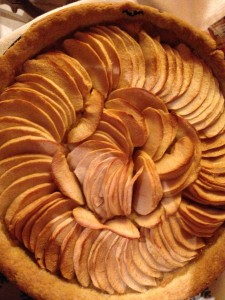 , and the cheese platter comprised all local goat cheeses. The meal was accompanied by regional wines.
, and the cheese platter comprised all local goat cheeses. The meal was accompanied by regional wines.
The barn was meant to be a second home, but she has made it her permanent home, Madame Bruneton told us, as she regaled us with stories of building the house, of the local antipathy to outsiders (which can be overcome, she assured us) and directions to the best hiking trails. At breakfast we basked in the morning light streaming into the dining room while sampling her homemade jams, a platter of cheese, baskets of bread and steaming café au lait.
From here we set off to explore the region and to head toward to our next overnight.
Yet another winding road turning to dirt track took us high above the medieval village of Malleval, where Valerie Seneclauze, the chatelaine of the Chateau Volan, welcomed us through narrow iron gates to her husband’s family chateau, first started in the 11th century. There is an option of rooms in a wing of the chateau itself, or in a separate building with a sitting room, kitchen, bath, and two modest bedrooms, which was where we were housed – along with a lantern to lead us back to the main building for aperitifs and dinner.
Madame Seneclauze has the reputation of being “a good cooker” and she provisions her table with food from her orchards and caves. In the ancient caves of the chateau, which we toured, she raises hundreds and hundreds of shitake mushrooms, which she sells to restaurants and markets. For our dinner that night, she served us Shitake Mushrooms Stuffed with Escargot with Shitake ‘Cappuccino’, followed by local squab from a near-by producer, and dessert worthy of a Michelin-starred restaurant. In the summer, she runs a small restaurant in one of the old barns, and year-round, her boutique is open full of products of her chateau-farm, such as pickled and dried mushrooms, wild berry jam, and specialty wine conserves.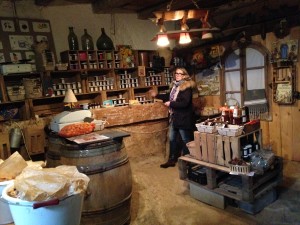
We visited wineries, cheesemakers, charcuterie shops, artisan bread bakers, and an ancient Chartreuse Monastery among other things.

http://www.pilat-tourisme.fr/en/
www.legrandnoe.fr
www.chateaudevolan.fr
UPDATE
I was thrilled to be featured recently in the Wall Street Journal in an article written by Jane Lear, and photographed by Thomas Kuoh who came to my house. La Vie Rustic was inundated with orders after the story appeared, which kept me busy. Rather fun to be called a ‘visionary’.
http://www.wsj.com/articles/on-her-farm-in-northern-california-georgeanne-brennan-digs-in-1425057632
I continue to write for the San Francisco Chronicle Food Section and my latest piece was on spring turnips. http://www.sfchronicle.com/recipes/article/Turnips-turn-up-all-over-S-F-6130499.php
I was also surprised to find that my book, A Pig in Provence, was number 3 on the Wall Street Journal’s list of best selling e-books for the week of June 8, 2014. Who knew? http://www.wsj.com/articles/best-selling-books-week-ended-june-8-1402595470
And, click here to see a free excerpt from my Crafsty.com cooking class, French Cooking at Home: Provence. http://www.craftsy.com/video/course?courseId=373
In the class I teach a real deal Bouillabaisse from start to finish, Meyer Lemon Tart, Salt Cod Fritters, Leg of Lamb with Herbes de Provence (and note the vintage sterling silver leg of lamb holder –one of my most treasured possessions), and talk about everything Provence from olive oil to wine.
Elaine Corn, ceramacist, has made some new gratin dishes for La Vie Rustic www.lavierustic.com, one of them modeled on a favorite of mine purchased more than 25 years ago, that recently broke. She has brought it back to life in her versions of it. 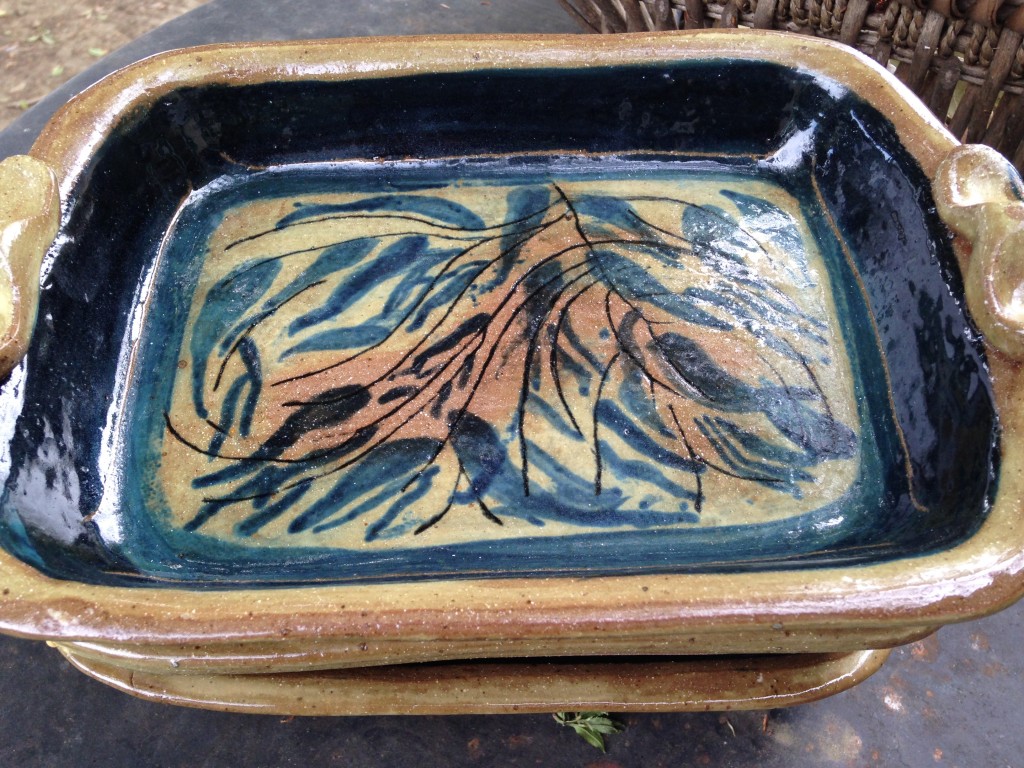 The store is also shipping Sultan de Marabout fig trees now, and of course, continuing with fruit-infused sea salts, chicken pasture mix, garden seeds, and DIY charcuterie sets.
The store is also shipping Sultan de Marabout fig trees now, and of course, continuing with fruit-infused sea salts, chicken pasture mix, garden seeds, and DIY charcuterie sets.
~Georgeanne

